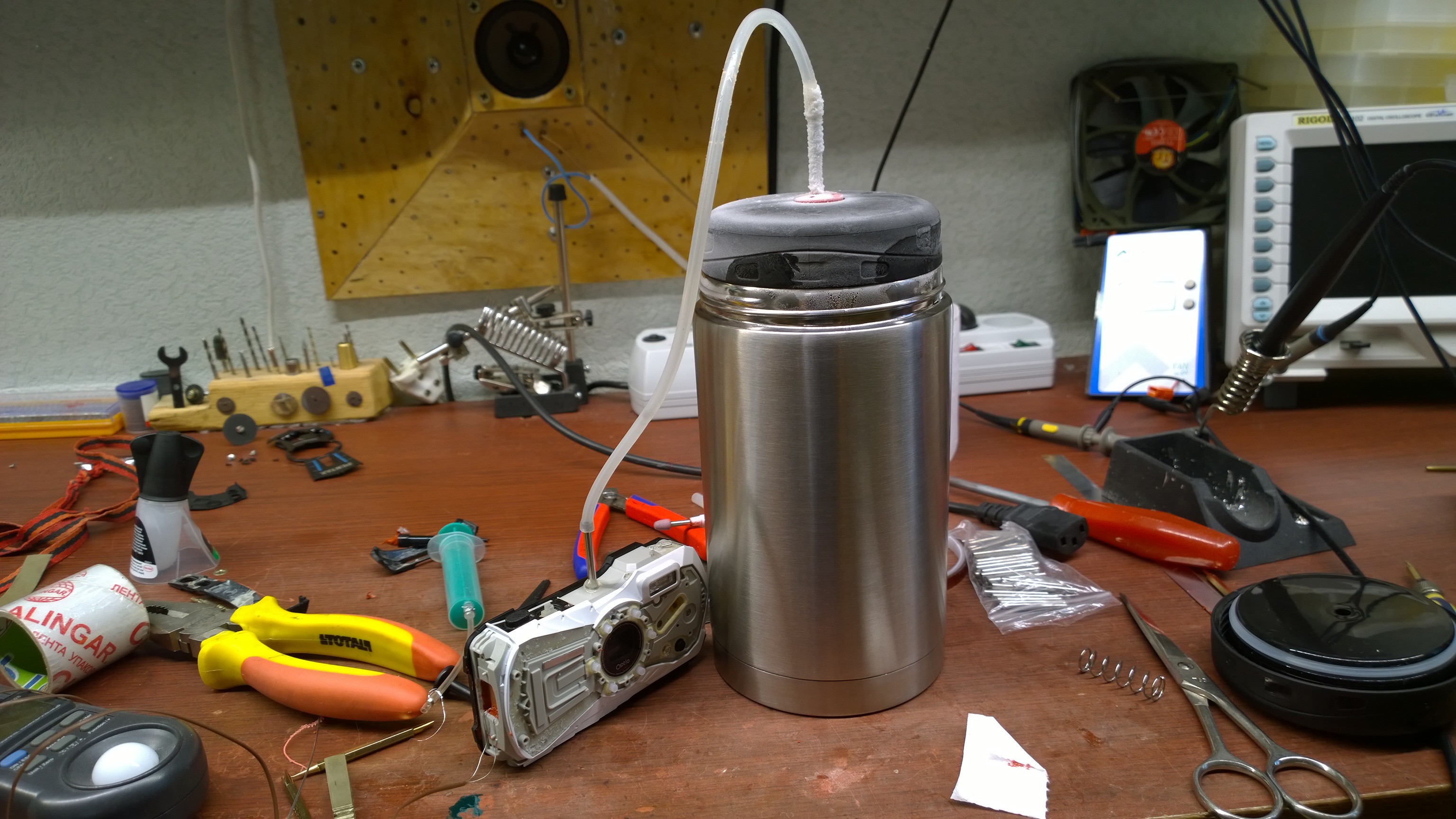To dremel out the hole in the case, I had to remove all the guts from the camera. It wasn't straightforward at all. While prying stuff out, I:
* got shocked by flash capacitor. It happens every freaking time I take apart a camera. Will I ever learn?!!
* melted a piece of sealing ridge with soldering iron
* pierced sound membrane (a thin rubbery sheet covering a hole, with a speaker and a microphone behind it
So as you may have guessed, sealing the camera back was quite a challenge. Especially problematic was the hole in sound membrane, which I couldn't find, and took the case apart and back together several times before I finally found the source of leak.
Even after that, the camera is not sealed very good. If I suck the air out with vacuum pump, it takes about a minute for it to regain the atmosphere inside. But that's good enough for next step...
For getting rid of moisture inside, I added a nipple to the case (actually I did that before leak testing).
I also left a screw on the bottom unpopulated, which made a nice outlet hole. And connected the nipple to a vacuum flask filled with liquid nitrogen. The evaporating nitrogen has zero moisture in it, and it evaporates at just the right rate, so it was a perfect solution for blowing out all the H2O from within the camera.

After a few hours of purging, I was ready to freeze the sensor!
 DeepSOIC
DeepSOIC
Discussions
Become a Hackaday.io Member
Create an account to leave a comment. Already have an account? Log In.